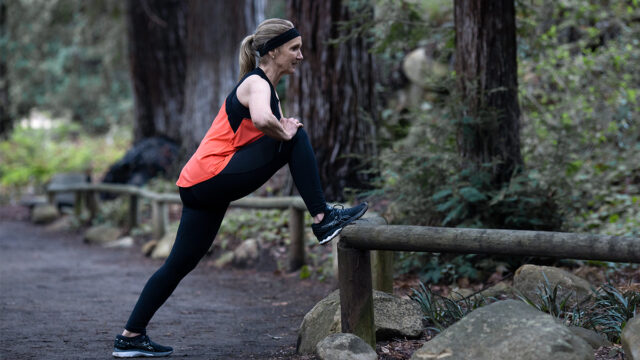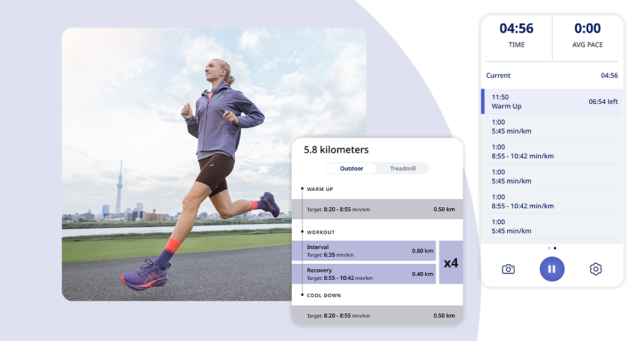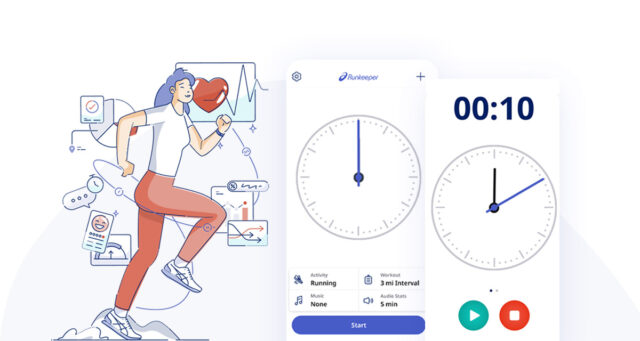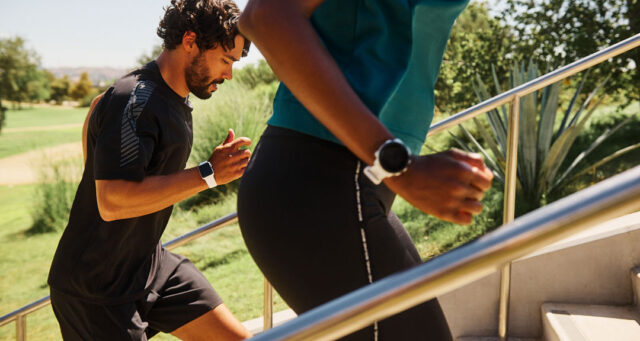Whether you’re a runner or non-runner, walker or jogger, or anything in between, hip pain is a common problem. There can be many different causes of hip pain, but one common trend seems to emerge—tightness and weakness in the hip muscles usually come with it. Luckily, there are many ways to strengthen and stretch the muscles to help you avoid hip pain, bring you relief and prevent future injuries.
If I were to list all the reasons people experience hip pain, we’d have a much longer article here. People can feel hip pain from sitting too much or running too hard. It all depends on the details of each individual’s movement and medical history, body mechanics, mobility, and strength. Hip pain can be felt at the front, side, or back of the hip. It can be a dull ache deep inside of the joint or it can be a superficial clicking/popping sensation. Most often, it presents as some sort of soreness or tightness for runners. One person’s cause of hip pain can be very different from the next. That said, treating hip pain begins with understanding why it’s there.
The hip joint is formed by the pelvis and the thigh bone. This ball and socket joint allows more mobility than many of your other joints. But with that mobility comes a need for stability. You don’t want one without the other. Often, hip pain stems from limitations in either strength or mobility of the hip.
Multiple muscles play a role in hip function, but the most commonly discussed muscle group is the glutes—and there is a good reason for this. The term “glutes” refers to three muscles: the gluteus maximus, medius, and minimus. These muscles wrap around the hips and form what we fondly recognize as the “butt.”
The hips play an incredibly important role in instability for any bipedal creature. They form the connection between your lower body and your torso. This connection can be like the foundation of a house: if it’s weak, especially in runners, your house could crumble (or at least crack), leading to poor body mechanics and injuries. By keeping the glutes strong, you are helping ensure that your running house is strong, too. Skip out on glute strengthening as a runner and you could be on the fast track to injuryville.
Try these three things to help ease hip pain:
- Stretch the hips. Try the figure four stretch, the knee to chest stretch, and a kneeling lunge stretch with an overhead reach to target the hip flexors, hip extensors and deep hip rotators.
- Reduce soft tissue restrictions in the hips. Using either a tennis ball, foam roller or massage therapist/physical therapist who has hands-on experience, make sure you are promoting blood flow to any area that feels tight or sore. Spend a minute or two rolling over any “hot spots” or sources of tension. Too much time and you could aggravate the area.
- Strengthen the hips. This is going to be one of the most important things you do as a runner. Whether it’s resisted clamshells, side lying abduction, lateral and monster walking, or single leg stability drills, you’re going to want a solid list of glute strengthening exercises to keep in your arsenal and work into every week.
By regularly incorporating these exercises into your routine, you’ll build the strength and flexibility you need to avoid the setbacks of hip pain. Remember, if you experience pain that persists or worsens, see a doctor.
Please note: This blog is not intended to be a substitute for professional medical advice, diagnosis, or treatment. Always seek the advice of your physician or another qualified health provider with any questions you may have regarding a medical condition.






